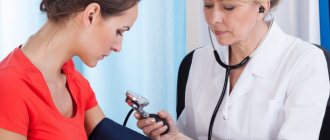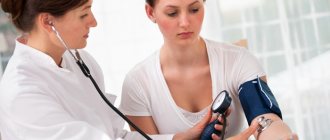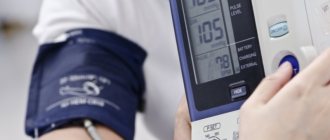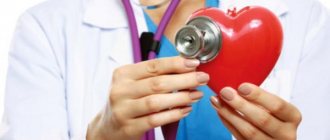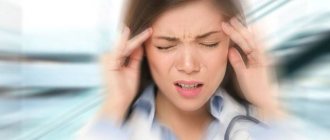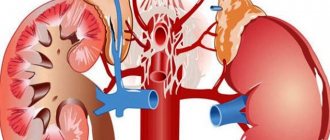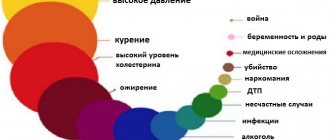- July 21, 2018
- Cardiology
- Olga Kuzinkova
The standard of medical care is an algorithm, rules, measures, and methods that are effective and accessible to a doctor for prescribing treatment. In Russian healthcare, there are four types of standards: primary health care, specialized medical care, emergency medical care and palliative medical care. The standard treatment for hypertension belongs to the second group. Based on them, the doctor conducts the necessary research, the results of which are used to draw up a treatment regimen - non-drug and medicinal, recommends spending several days in the hospital and changing eating habits.
Beginning the diagnosis of hypertension
Standards of examination and treatment of hypertension, carried out in full, will help reduce the risk of increased pain.
The examination of the patient begins with confirmation of the diagnosis. It is necessary to establish what caused secondary arterial hypertension and assess the risk of exacerbation for the cardiovascular system and other organs. The doctor is obliged to measure blood pressure and prescribe examinations, including laboratory tests. Additional diagnostics may be required. The doctor will determine which methods are required - they are not universal.
It is better to measure pressure on the shoulder, and on both arms. The doctor will focus on indicators with a higher value. In addition, the patient's heart rate will be measured.
Why does hypertension occur?
Hypertension is a pathology characterized by a chronic, that is, long-term increase in blood pressure (BP). The disease usually occurs between the ages of 40 and 50, but there are increasingly cases where the diagnosis is made at a young age - this is due to an abundance of bad habits, disruption of sleep and wakefulness intervals, poor diet, and unfavorable environment.
When treating at home, a variety of herbal tinctures are widely used, for example, chamomile tea, mint tea, green tea, decoction of viburnum berries, rowan berries. Their regular use can strengthen the vascular wall and make blood pressure more stable.
There are two main types of this disease - primary and secondary hypertension. Primary hypertension is the most interesting in terms of causes and clinical cases; it accounts for more than 90% of all visits to doctors regarding high blood pressure. This is an increase in blood pressure that occurred on its own, without previous diseases. It has no specific organic cause, and the pathogenesis is complex and forms a vicious circle. The main role is played by the formation of renin, which is converted to angiotensin under the action of ACE (angiotensin-converting enzyme). This leads to the release of a powerful vasoconstrictor, angiotensin II, which sets off a cascade of consequences. Treatment is symptomatic or pathogenetic (aimed at breaking the vicious circle).
Secondary hypertension has a clear cause - it has an underlying disease that has affected one of the systems that regulate blood pressure levels. This may be a pathology of the cardiovascular system, kidneys, endocrine system (pituitary or adrenal glands, sometimes thyroid gland). Treatment of secondary hypertension takes into account its etiology, the true cause. The pressure decreases, but the doctor’s main task is to eliminate the primary disease. This type of increase in blood pressure accounts for about 5% of calls for medical help for hypertension.
Risk factors contribute to the occurrence of primary hypertension:
- stress and emotional stress;
- smoking;
- disturbance of sleep and wakefulness;
- poor nutrition;
- obesity;
- inactive lifestyle;
- age over 40 years;
- male gender;
- genetic predisposition (the presence in the family of people with a similar pathology);
- diabetes;
- disturbances of water-salt metabolism (for example, excessive consumption of sodium in the form of table salt).
The basis of the treatment of hypertension is the impact on pathogenetic mechanisms using combination therapy, which allows the pathology to be treated comprehensively.
They statistically significantly increase the risk of developing the disease, and if several risk factors are present, then the likelihood of developing hypertension increases significantly.
Risk assessment for hypertension
The standard of care for hypertension includes obtaining a detailed medical history.
It will help you understand when the first symptoms appeared and what caused them. It is also important to identify secondary causative factors. For example, women are asked about changes in blood pressure during pregnancy.
High blood pressure can lead to diseases of the heart and blood vessels, as well as kidneys. The specialist is required to assess the danger: whether there is diabetes, heart failure, neurological disorders, and so on.
The doctor will also ask about diet and smoking, and whether there is a history of hypertension or heart disease in the family.
Standard treatment of hypertension in a clinic
The outpatient stage includes a doctor conducting diagnostics, determining negative factors and clinical conditions, for example, cerebrovascular diseases and heart diseases.
If a hypertensive crisis occurs, this is an indication for hospitalization. But before it is carried out, it is necessary to carry out several examinations, in addition to blood and urine tests, including fluorography and stool examination for worms.
When diagnosing, the doctor should ask the patient about whether there are relatives with kidney disease, whether there have been strokes, diabetes and hypertension.
Special attention to the patient’s lifestyle: what he eats, what physical exercises he does, how much salt he consumes. The doctor must weigh the patient and measure his height, determine his body mass index, and examine the fundus.
Laboratory data should include examinations for hemoglobin, red blood cells, cholesterol, potassium, sodium, as well as the results of ultrasound of the arteries and kidneys and other studies.
Diagnostics
In order to prescribe the correct treatment for arterial hypertension, it is necessary to undergo an examination, based on the results of which the doctor will prescribe therapy:
- analysis of medical history and complaints;
- a survey about the presence of chronic illnesses, injuries and operations that have occurred;
- doctors need information about whether anyone in the family has cardiovascular disease;
- physical examination - detection of murmurs over large vessels in the heart and the presence of wheezing in the lungs, mandatory recording of blood pressure;
- a general blood test is performed to check hemoglobin, platelets, red blood cells; such a study also helps to determine the presence of diseases that may affect the development of pathology;
- electrocardiography - a method that can determine the electrical activity of the heart, allows you to check its functioning and identify all changes characteristic of a given disease;
- echocardiographic examination - helps to assess disorders and the nature of myocardial damage;
- daily monitoring – monitoring pressure over 24 hours allows you to identify fluctuations and determine the maximum level of growth;
- general urinalysis - recommended to identify changes in kidney function, which often cause increased blood pressure;
- ultrasound examination of the adrenal glands, kidneys and their vessels - detects diseases that lead to increased blood pressure;
- consultation with an ophthalmologist - examination of the fundus of the eye, carried out to check changes in the structure of blood vessels;
- A visit to a therapist is also recommended.
Treatment tactics for hypertension
The standard of care for hypertension contains a “maneuver” for non-drug therapy.
To begin with, the doctor will suggest giving up salt and cigarettes, changing your diet by adding vegetables and fruits.
The doctor will prescribe medications to patients with a high and very high risk of developing cardiovascular diseases. The choice of drugs should be based on contraindications. Initially, the doses are minimal.
Among the main drugs: Hydrochlorothiazide, Indapamide, Metoprolol, etc. Additional medications may be prescribed: Aspirin, Atorvastatin, Simvastatin, etc.
When the pressure is stabilized and the patient feels better, treatment will be considered sufficient. In other cases, outpatient monitoring will be required.
Hypertensive crisis
A mandatory feature of a hypertensive crisis is a sudden rise in blood pressure. Not only hypertension as a factor can cause an exacerbation, but also traumatic brain injury or burns. A sudden increase in blood pressure is affected by stopping medication, surgery, alcohol, drugs, salt or stress.
The body reacts to these factors reflexively. Pain, anxiety, hyperthermia appear, and renal blood flow worsens.
Patients with a hypertensive crisis often complain of nosebleeds and headaches, shortness of breath and chest pain, muscle tremors and nausea may appear.
Symptoms of a hypertensive crisis:
- chest pain – 27%;
- headache and rapid heartbeat – 22%;
- psychomotor agitation – 21%.
Main clinical symptoms
Worsening of hypertension
- Arterial hypertension;
- Absence of general cerebral symptoms, symptoms of ACS, ALV.
Uncomplicated hypertensive crisis (neurovegetative)
- Sudden onset, connection with provoking factors;
- Arterial hypertension (predominant increase in systolic blood pressure);
- Characterized by pronounced autonomic symptoms of the sympatho-adrenal type: fear of death, tremor of the limbs, hyperhidrosis;
- Moderately severe cerebral symptoms: headache, nausea, vomiting, visual disturbances.
Uncomplicated hypertensive crisis (water-salt)
- Gradual onset (2-3 days), for no apparent reason;
- Before the development of a crisis - pressor polyuria;
- Arterial hypertension (increased SBP and, to a greater extent, DBP);
- General cerebral symptoms are typical: headache, nausea, vomiting, visual disturbances.
Algorithm for a doctor’s actions during a hypertensive crisis
The standard of care for hypertension cannot be achieved without a clear pattern of questions.
If there is a sudden increase in blood pressure, the doctor should ask the patient:
- Have there been increases in blood pressure before?
- What are the maximum values?
- What are the symptoms?
- Is therapy prescribed and what antihypertensive drugs is the patient taking?
- How long ago did the symptoms appear?
- How did the patient lower his blood pressure before?
- Did you have a stroke and do you have heart and vascular diseases?
- Does the patient feel convulsions and worsening of his condition, has there been vomiting and shortness of breath?
Comprehensive treatment of arterial hypertension
Doctors' recommendations state that for therapy it is necessary to use strictly reasoned combinations of various groups of antihypertensive drugs.
The most popular are:
- diuretics + angiotensin receptor blocker;
- diuretics + beta blockers (beta blockers);
- diuretics + ACE inhibitors (angiotensin-converting enzyme inhibitors);
- CCBs (calcium channel blockers) + beta blockers;
- CCB + ACEI.
Much less frequently, but still used:
- beta blocker + ACE inhibitor;
- diuretics + CCB.
With this combination therapy, an optimal result is achieved in 80% of patients.
Diagnosis of hypertension
The doctor must assess the general condition of the patient, taking into account breathing, position, color of the skin, the condition of the blood vessels - can they swell and pulsate, is there swelling, what is the pulse, pressure readings on both arms, heart rate, etc.
After diagnosis, the doctor must take the following actions:
- The patient's head should be higher than the body level.
- If the patient has lost consciousness, place him on his side.
- Measure your heart rate and blood pressure every fifteen minutes.
- Start drug therapy with one drug or in combination.
- Assess the effectiveness of taking medications at least half an hour after administration.
- Deliver to the hospital in a supine position.
Next, the standard treatment of hypertension in a hospital begins to work.
Therapeutic measures
Worsening of hypertension
- Providing a medical and protective regime;
- Horizontal position;
- Decrease in SBP level by no more than 25% from the initial level:
- Captopril – 25-50 mg orally or
- Clonidine (Clonidine) – 0.075-0.15 mg orally or
- Nifedipine -10 mg (crushed) orally;
- Medical evacuation according to indications (see “General tactical measures”).
Uncomplicated hypertensive crisis (neurovegetative)
- Providing a medical and protective regime;
- Horizontal position;
- Decrease in SBP level by no more than 25%) from the initial level:
- Proxodolol – 40 mg orally or
- Metoprolol – 50 mg orally or
- Atenolol – 50 mg orally or
- Captopril – 25-50 mg orally or
- Enalapril -10 mg orally or
- Nifedipine – 10 mg (crushed) orally;
- In the presence of psychomotor agitation and vomiting:
- Droperidol – 1.25-2.5 mg IV bolus slowly;
- If the patient is severely neurotic :
- Diazepam – 5-10 mg IM (slow IV bolus);
- If there is no effect within 25 minutes:
- IV administration of antihypertensive drugs (see section “Hypertensive encephalopathy”);
- Medical evacuation according to indications (see “General tactical measures”).
Uncomplicated hypertensive crisis (water-salt)
- Providing a medical and protective regime;
- Horizontal position;
- Decrease in SBP level by no more than 25% from the initial level:
- Captopril – 25 – 50 mg orally or
- Enalapril -10 mg orally or
For heart rate > 80 per minute:
- Metoprolol – 50 mg orally or
- Atenolol – 50 mg orally;
- If there are symptoms of congestive heart failure, edema syndrome:
- Furosemide – 40 mg orally or – 20 mg IV bolus slowly;
- If there is no effect within 25 minutes:
- IV administration of antihypertensive drugs (see section “Hypertensive encephalopathy”);
- Medical evacuation according to indications (see “General tactical measures”).
Symptomatic treatment of hypertension
Taking into account the manifestations of a hypertensive crisis, the doctor prescribes drugs that can relieve the symptoms. They are auxiliary and should be used with caution.
For nausea and vomiting, the doctor will most likely prescribe Metoclopramide or Droperidol, for convulsions - Magnesium Sulfate and Diazepam, to reduce headaches, use Metamizole sodium, Metamizole sodium + Diphenhydramine intravenously.
The drugs have side effects. Dibazol may cause a short-term increase in blood pressure, nausea, fever, dizziness or allergies. Magnesium sulfate causes sweating or respiratory and central nervous system depression. "Eufillin" is contraindicated for epileptics and patients with the acute phase of a heart attack.
Stages of patient recovery
The standard of treatment for hypertension in a hospital is based on the criteria for stratification of arterial hypertension. In addition, the doctor needs to take into account bad habits, such as smoking or a love of poor nutrition, which increases the patient’s cholesterol and leads to obesity. And also, do you have diabetes?
The effect on target organs is revealed. For example, left ventricular hypertrophy, damage to the arteries and aorta, and other disorders may occur.
It is important to determine whether there are diseases of the heart, kidneys and blood vessels.
Admission to hospital may be an emergency. The standard of treatment for hypertension in a day hospital takes into account the indications for hospitalization:
- cerebrovascular accident;
- cardiac asthma;
- pulmonary edema and so on.
The patient complains of a sharp deterioration in health, increased blood pressure and severe headaches. May experience tinnitus, drowsiness, weakness, dizziness, thirst, chills, and blurred vision.
Following the standards of diagnosis and treatment for hypertension, the doctor must measure blood pressure every 15 minutes, prescribe an ECG, echocardiography, general urine and blood tests, including biochemical tests, and refer an appointment with a neurologist.
Signs of primary hypertension
A sign of arterial hypertension is blood pressure levels exceeding 130 mmHg. Art. for systolic and 90 mm Hg. Art. for diastolic.
Hypertension can be hidden for a long time; a person often does not notice that his blood pressure is higher than normal. This is possible with a mild form of the disease. Patients are only occasionally bothered by unpleasant symptoms such as general malaise and headache attacks; as a rule, they do not pay much attention to this.
The patient may not suspect for a long time that he has high blood pressure
At later stages, the disease manifests itself in a bright clinical picture, which varies from mild malaise to vivid symptoms associated with damage to target organs and systems:
- cardiovascular (a feeling of squeezing or a painful jolt behind the sternum, tachycardia, arrhythmia, uneven force of heart beats or a feeling of cardiac arrest, tingling);
- brain (dizziness, drowsiness, headaches, clouding of consciousness, memory and thought process disorders);
- kidneys (oliguria - decreased diuresis, pain when urinating, development of kidney dystrophy);
- retina (floaters before the eyes, darkening of the eyes, blurred vision).
If such symptoms appear, you should consult a specialist rather than resort to self-treatment. First of all, it is necessary to determine the exact degree of the disease - in the first degree, treatment with drugs is not used, or they are used symptomatically, and the manifestations of the disease are eliminated by normalizing the daily routine, revising the diet and increasing physical activity.
Treatment of secondary hypertension takes into account its etiology, the true cause. The pressure decreases, but the doctor’s main task is to eliminate the primary disease.
Hypertension: treatment methods
When choosing components of pharmacotherapy, the doctor must know the contraindications of the drugs. Various groups of antihypertensives may be contraindicated in cases of gout, pregnancy, hypercalcemia or hypokalemia, as well as cardiac or renal failure. Care should be taken when choosing a course of treatment for women capable of childbearing, as well as athletes. It is necessary to consider whether there are concomitant diseases. Then the doctor must proceed from the principles of specific or individual therapy.
Having determined the risk of arterial hypertension, the doctor prescribes therapy - the “gold standard” for the treatment of hypertension. For low and medium risk there should be monotherapy, for high and very high risks - combination therapy.
The course of treatment may change, and modern methods of treating hypertension allow this. Monotherapy can be carried out with a transition to another medicine. Combined - with increasing the dose of two drugs taken or adding one more.
Further treatment of hypertension
For hypertension, treatment may be non-drug and antihypertensive. The doctor should find out two weeks after the start of the course whether there is a decrease in blood pressure. The next appointment is in another two weeks. Next, the “control” point is the next two months. If blood pressure readings are low, the patient will need to be monitored by a doctor for up to six months and have daily blood pressure measurements. If blood pressure readings do not fall below target levels, the doctor needs to adjust therapy and schedule appointments every one to two months.
Principles of treatment of arterial hypertension
In order to overcome a difficult disease, you need to apply special rules to obtain positive results.
- You should choose the necessary medicine carefully, as it should be well accepted by the body and ideally provide a therapeutic effect for 24 hours.
- Therapy begins with small doses and then increases until a stable effect occurs.
- Unfortunately, a single treatment for arterial hypertension will not eliminate the problem. The pathology requires long-term use of medications in order to maintain optimal blood pressure and prevent possible complications.
- If one drug is ineffective, it is recommended to use an optimal combination of drugs to obtain the maximum therapeutic effect. There are special schemes according to which doctors select the best treatment.
Treatment without medication
Considering the risk factors and asymptomatic conditions for organ damage due to arterial hypertension, the doctor recommends lifestyle changes and, if necessary, adjusting blood pressure levels with medications.
In addition, the doctor may recommend non-drug therapy. This includes:
- limiting salt intake to five grams per day;
- limit alcohol - ethanol to thirty grams per day for men, to twenty grams for women;
- eat more fruits and vegetables, as well as low-fat dairy products;
- reduce body weight if there are no contraindications;
- exercise – at least half an hour a day;
- to give up smoking.
If the food is dietary and without too much salt, this will be the first step towards improving the well-being of hypertensive patients. But you can’t be fanatical about food - it should be healthy and balanced. Physical education should also be moderate.
The standard of care for hypertension allows the doctor to prescribe medications to correct risk factors. For example, statins, antiplatelet drugs and Aspirin.
Insufficient quality of medical care
The standard of care for hypertension may be violated in details, but they can affect the effectiveness of the course of treatment.
Doctors and insurance company specialists are preparing a study to assess the quality of work of doctors in clinics and hospitals. The examination contains an analysis of quantitative indicators at all stages of treatment for hypertension. The studies are conducted primarily within a single city's health care system, and results vary. However, the conclusions of experts and the identified medical errors are typical.
Incorrect treatment or treatment that requires adjustment usually begins at the first stage - information in the clinic. That is, the general practitioner did not question the patient fully enough and did not determine the causes of hypertension. Notes on laboratory testing mainly concern blood tests not ordered for sugar or cholesterol, for example.
Doctors “forget” to prescribe an ECG, echocardiogram or ultrasound of the kidneys and thyroid gland.
Treatment tactics are also affected by errors in establishing the stage of hypertension and the degree of risk; there is no reference to concomitant diseases.
Errors in diagnosis often turn into errors in treatment, or they occur due to the unprofessionalism of the doctor. For example, ACE inhibitors or diuretics are not used when indicated, as well as the prescription of non-indicated drugs - riboxin or glucose.
As a rule, most often medical errors are registered at the stage of treatment in a day and 24-hour hospital.
Types of hypertension
The disease can be divided into two main types.
- Essential is a pathology that does not have a specific cause, which develops over many years due to wear and tear on the body, minimal physical activity, excessive weight and high salt intake. Sometimes it can be hereditary.
- Secondary develops as a consequence of neglect of other diseases. Can be divided into subspecies:
- renal;
- endocrine;
- hemodynamic;
- neurological;
- stressful;
- iatrogenic
- arterial hypertension in pregnant women.
How doctors make mistakes when treating hypertensive crisis
“Magnesium sulfate” is a painful injection; infiltrates may occur when the injection is administered. "Dibazol" is not an antihypertensive drug; it is necessary only if cerebral circulation is impaired. The administration of Propranolol by a doctor without the necessary skills can cause complications.
Sedatives can lead the diagnosis in the wrong direction, for example, if cerebral circulation is impaired.
Medicines such as Drotaverine or Hydrochloride are not able to lower blood pressure.
Drug treatments for hypertension should exclude errors.
Comprehensive management of hypertension
Experts are confident that a multidisciplinary approach is required for effective treatment. That is, several doctors should participate in the process: a therapist, specialists in various fields depending on the effect of hypertension on other organs, nurses and pharmacy workers. If these specialists cooperate, the disease can be more easily controlled.
Comprehensive patient management programs lead to significant effectiveness. However, for now, the standard of care for arterial hypertension is prescribed separately for the clinic and for the hospital.
With a doctor on the phone
Classic medical care is provided “face to face”: in a clinic or in a hospital. The standard of care for hypertension starts here. However, new methods are being developed, for example, telephone interviews or those based on telemedicine capabilities. Over the phone, the doctor can tell the patient what to change in his usual diet, for example, or reduce the load.
Telephone calls allow you to connect more people to consultations with minimal time investment. In addition, the method allows you to help the patient in a timely manner based on the described symptoms and individualize the course.
But all the new methods are not yet widely used in the healthcare system and do not replace the need to visit a doctor. They complement the treatment process by improving the interaction between doctor and patient.
New methods of treating hypertension
A month ago (summer 2020), Novosibirsk biologists obtained results of using gene therapy on rats suffering from high blood pressure. Scientists managed to reduce the average blood pressure level for two weeks. The rats were injected with a drug containing DNA components that found genes involved in the development of hypertension. Moreover, the drugs have a longer lasting effect than standard medications.
Scientists believe that oligonucleotides can control the expansion or contraction of blood vessel walls. This medicine can be used by injection or through an inhaler. However, so far the positive result is only based on laboratory tests. Gene therapy in the fight against hypertension must first pass all the necessary clinical tests and only then will it be allowed to treat a wide range of patients.
Anti-Hypertension Day
This date was approved by the World Hypertension League with the support of the World Health Organization and has been held since 2005 annually on the second Saturday of May.
In 2020, this day fell on May 13, and the Moscow Department held “Open Days” in all medical organizations of the city with the support of Health Centers and cardiologists.
As part of the event, the following were organized:
- questionnaires on knowledge of the basic principles of lifestyle and early detection of signs of hypertension;
- measurement of blood pressure and body mass index;
- assessment of physical activity and nutrition;
- blood glucose and cholesterol screening;
- bioimpedansometry - checking body composition using impedance measurements;
- examination with a cardiovisor - a device that can diagnose changes in the functioning of the heart.
